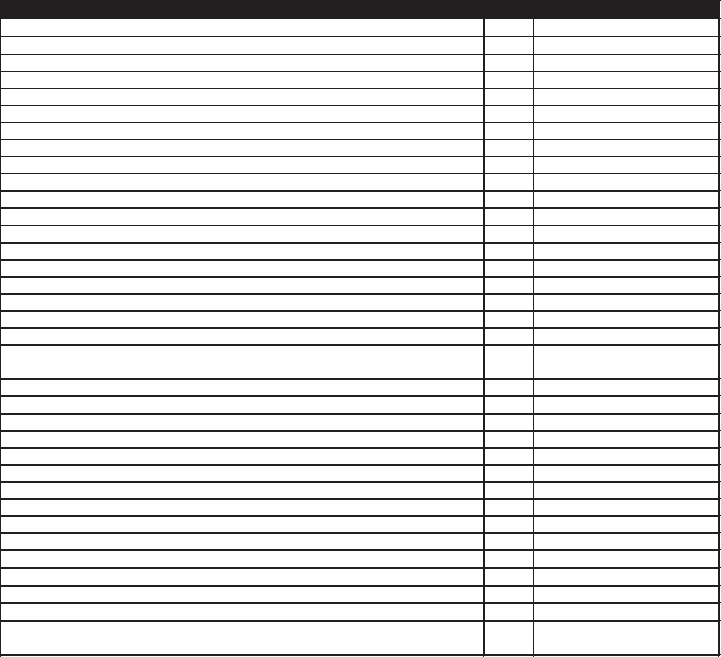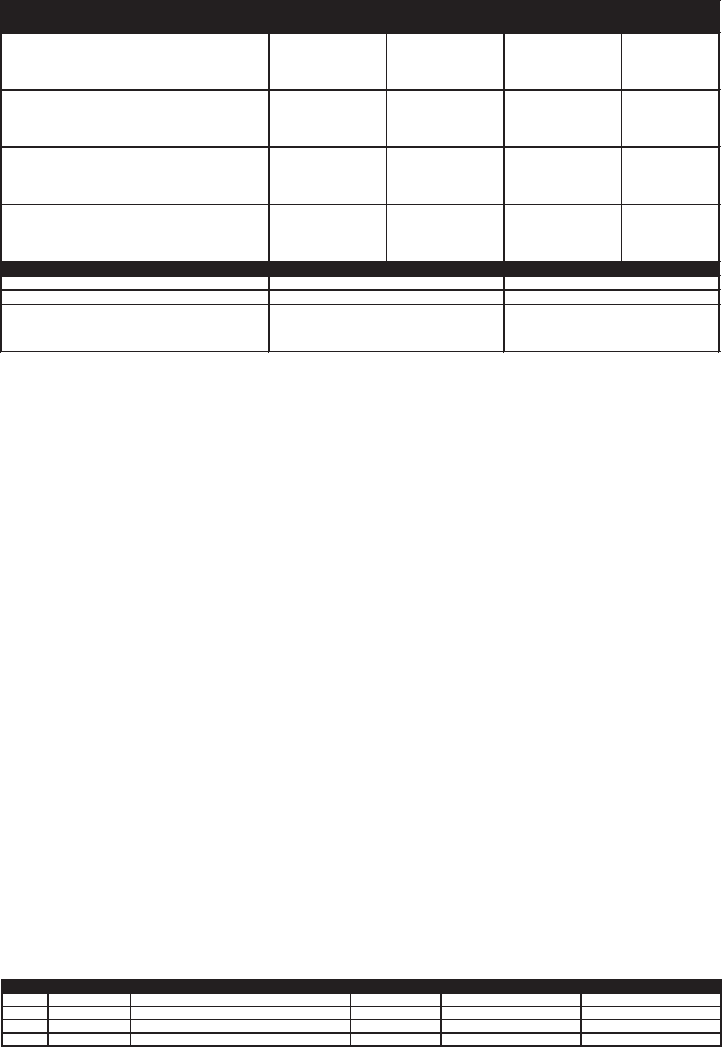
CASE STUDY—GAME PRODUCTION CYCLE 431
VO dialogue into a spreadsheet and reviews it with the designer and producer.
Because the recording session is happening so close to the end of the produc-
tion cycle, there is only time for a single recording session. A three day pick-up
session is scheduled for a few weeks later, but the producer wants to avoid hav-
ing this session if possible in order to save on costs and time. Figure A.22 is the
voiceover spreadsheet that will be used in Justice Unit.
Line # Character English Level Type SfX Context Voice
Direction
Filename
1 Bad Guy #13 We're in the van, commander.
We're going to lose the police on
the interstate.
1 Mission
Open
Radio
futz
The bad guys are trying to outrun
the police after they stole a
museum artefact.
Serious 01_bg13_01.wav
2 Bulletpoint Sam, they're getting away! 1 Objective Bulletpoint has been monitoring
radio chatter and knows the what
the bad guys are planning.
Serious,raised
voice
01_bp_01.wav
3 Sam I'll cut them off. 1 Objective Sam received the update from
Bulletpoint and will cut off the bad
guys on the highway.
Serious, calm 01_sam_01.wav
4 Civilian #3 Help me! 1 Non-Player
Character
This civilian got hit by the bad guys
are they were trying to escape.
Scared, yelling 01_c3_01.wav
5 Sam You'll be OK. I've called the
ambulance.
1 Cinematic Sam stops pursuit of the bad guys
and aids the injured civilian.
Soothing 01_sam_02.wav
FIGURE A.22 Voiceover spreadsheet for Justice Unit.
The writer and sound designer attend the recording sessions. A professional
VO director was hired to direct the voiceover actors, but it is useful for the writer
and sound designer to be on site in case there are any rewrites or new dialogue
needs to be written. They can also advise the director and actors of the context of
lines in the VO script and ensure that the performances will work well when they
are implemented into the game. They are also on hand to select which takes they
want for each line reading, which will save the vendor some time in the editing
process. Instead of editing all the VO files, the vendor can concentrate on editing
only the high-quality VO files that will be used in the game. The vendor is only
responsible for basic editing of the files—removing sound artifacts and naming
all the files per the established naming convention. The sound designer will do
any additional special edits on the VO files.
The sound designer was able to implement about 90 percent of the place-
holder VO recordings to test out the placement of the VO cues and how well they
worked in the game. Because he was able to implement most of the placeholder
VO files, it will be easy to copy over the final VO files into the build.
As the voiceover tasks are completed, the producer reviews the checklist in
Figure A.23 to confirm that he has everything necessary for the game’s voiceover.
Refer to Chapter 10 for more information on voiceover production.
A.3.2 Music
Supergame Studios plans to license the main music theme that is being used
in the movie so it can be used in the game’s opening sequence. They think this

432 THE GAME PRODUCTION HANDBOOK, 2/E
will be a good way to tie in the movie and game. This is the only track that will
be licensed for the game and will play in the opening sequence for the game.
Supergame Studios is hiring a composer to create original music for the rest of
the game. The composer will be allowed to compose variants on the main theme
if this is part of the music design.
The sound designer puts together a plan for the music in late June 2008, when
the first playable milestone is completed. Figure A.24 is an estimated schedule
for the music tasks to be completed. The sound designer wants to send out bid
packages in late September 2008 and receive final music files in late April 2009.
The composer will deliver initial versions of all music a few months before the
April 2009 deadline so there is ample time to review the music in the game and
provide any feedback to the composer on what changes must be made.
The sound designer is able to integrate some existing music tracks into the
playable build to get an idea of what type of music will work best in the game.
VOICEOVER CHECKLIST Y / N NOTES
PRE-PRODUCTION
Is initial voiceover design completed?
Are intial character descriptions written?
Is initial voiceover schedule completed?
Is initial voiceover budget completed?
Is file naming convention established?
Is file management system established?
Are file delivery formats defined?
Are casting notes written with sample dialogue?
Have bid packages been sent to sound studios?
PRODUCTION
Is sound studio selected?
Has final decision been made on using union or non-union actors?
Have recording dates been tentatively booked with the sound studio?
Is initial voiceover script written?
Is placeholder dialogue recorded and implemented in the game?
Are auditions scheduled?
Are celebrity voices being used? Are they available for the tentative dates?
Are final actor selections completed? Are they available for the tentative
dates?
RECORDING SESSION
Are dates finalized and booked with the actors?
Is the voiceover script final?
Are audition files available for the actors to listen to?
Is pronunciation guide final?
Is game footage available to show the actors?
Is voice director booked for the session?
Are all final takes selected?
POST-PRODUCTION
Has sound studio edited the final takes of audio files?
Are files delivered in correct format? Are uncompressed versions available?
Has the raw data from the recording session been delivered?
Has voiceover script been updated with any dialogue changes and alternate
lines?
FIGURE A.23 Voiceover checklist.

CASE STUDY—GAME PRODUCTION CYCLE 433
He sends these test music tracks along with the bid information so that the com-
posers can get a good idea of what the music should sound like in the game.
Figure A.25 is an example of a music bid for Justice Unit.
Once the composer is selected, he receives a playable build of the game and
documentation that describes the characters, setting, and story. This will help
him get a better idea of the game and will improve the quality of the music he
is composing for the game. The composer and sound designer set up a process
for the sound designer to review each track when the composer has an initial
version ready. Once the composer receives feedback, he creates another version
for review. The sound designer and composer find that two rounds of feedback
usually provide the desired results with the music.
As with the voiceover files, the sound designer integrated placeholder music
files into the game, so that they can easily be replaced with the final music files when
they are ready. Because the game supports adaptive music, the sound designer also
uses these placeholder music files to test how well the adaptive music is working.
After the composer delivers the final music files in April 2009, the sound
designer discovers he needs one more minute of music to loop behind some
Task Resource Deadline General Timeline
Music design determined
Sound Designer/Sound
Engineer 27-Jun-08
Before production starts
Initial music deliverables defined Sound Designer 27-Sep-08
By Alpha
Send bid packages to composers (if working with external
composer) Producer 27-Sep-08
By Alpha
Start negotiating for music rights (if licensing music) Producer 27-Sep-08
By Alpha
Add placeholder music in the game Sound Designer 21-Dec-08
Before Alpha
First set of compositions delivered by the composer Composer 27-Mar-09
~ 2 - 3 months before Beta
Composer delivers final music mixes Composer 27-Apr-09
~ 1 month before Beta
Secure all final music rights Producer 27-Apr-09
~ 1 month before Beta
Implement all final music in the game Sound Designer 27-May-09
By Beta
FIGURE A.24 Estimated music schedule for Justice Unit.
Music Cue Length Mixing Details Location Format Notes Deadline
Main Theme 120 secs Full Dolby 5.1 mix UI .wav
Main theme for the game, will be heard
whenever players are in the UI shell
screens. Must match the look and feel
outlined in enclosed "Music Vision"
document.
27-Mar-09
Loop 1 30 secs Stereo In-game .wav
Heard in game as a looping piece of
background music. Must match the look
and feel outlined in enclosed "Music
Vision" document.
27-Mar-09
Loop 2 30 secs Stereo In-game .wav
Heard in game as a looping piece of
background music. Must match the look
and feel outlined in enclosed "Music
Vision" document.
27-Mar-09
Intro Cinematic 180 secs
Stereo, music + voiceover
+ sound effects, music
must be timed to picture. Cinematic .wav
Deliver final music, vo, and sound effects
mixes on separate tracks.
27-Apr-09
Midtro Cinematic 60 secs
Stereo, music only,
background music, no
timing. Cinematic .wav
Deliver final music, vo, and sound effects
mixes on separate tracks.
27-Apr-09
Outro Cinematic 90 secs
Stereo, music + voiceover
+ sound effects, music
must be timed to picture. Cinematic .wav
Deliver final music, vo, and sound effects
mixes on separate tracks.
27-Apr-09
FIGURE A.25 Estimated music bid for Justice Unit.

434 THE GAME PRODUCTION HANDBOOK, 2/E
of the UI screens. He decides to re-edit one of the tracks the composer sent
over, instead of asking the composer to create an additional minute of music.
Because the composer had a work for hire contract with Supergame Studios, it
is fine for the sound designer to re-edit or sample any music files the composer
delivers. In fact, when the composer delivers the music files, he also delivers all
the source files in case Supergame Studios needs or wants to make any changes.
Refer to Chapter 11 for more information on music.
A.3.3 Motion Capture
The lead artist and animators want to motion capture some of the fighting
moves and some of the superhero powers in order to make them look more re-
alistic in the game. The producer works with the lead animator to put together
a schedule for completing the motion capture on Justice Unit. Ideally, the ani-
mator would like to have the motion capture shoot in October 2008 so he has
enough time to clean up the motions, target them to the characters, and get
them working in the game. Figure A.26 is an estimated schedule for complet-
ing the motion capture for Justice Unit.
Task Resource Dates General Timeline
Initial motion capturelist completed Animator 27-Sep-08 ~ 6 - 8 months before beta
Send bid packages to motion capture studio Producer 27-Jul-08 ~ 12 - 14 months before beta
Book time for motion capture shoot Producer 27-Aug-08 as soon as you have decided on a studio
Audition actors Motion Capture Studio 15-Sep-08
~ 4 - 6 weeks before motion capture shoot (more time if
casting a large amount of actors).
Cast actors Animator/Producer 15-Sep-08
~ 4 - 6 weeks before motion capture shoot (more time if
casting a large amount of actors).
Final motion capture shot list complete Animator 13-Oct-08 ~ 2 weeks before scheduled motion capture shoot
Motion capture recorded Animator/Producer 27-Oct-08
~ 6 - 8 months before beta (more time if a large amount of
motions or complex motions are to be recorded).
Motions processed and implemented in game Animator 20-May-09 ~ 1 week before beta
FIGURE A.26 Estimated motion capture schedule for Justice Unit.
Once the producer understands what the motion capture schedule is going
to be, he works with the lead animator to put together a bid package to send to
motion capture studios. The lead animator will be the main point of contact for
the motion capture vendor once they begin work, so the producer wants the
lead animator to be involved in selecting the vendor. Figure A.27 is the motion
capture bid for Justice Unit.
When the vendor has been selected, the lead animator works with them
to schedule a time for the motion capture shoot. The shoot will probably last
around three days, as there are less than 200 motions that need captured. The
animator will attend the motion shoot and work with the director and actors to
get the desired motions and to select which takes he wants of each motion.
Before the scheduled shoot, the lead animator prepares the final spread-
sheet that details all the motions to be recorded. Figure A.28 is an example of
the motion capture spreadsheet used for Justice Unit. The vendor will do some

CASE STUDY—GAME PRODUCTION CYCLE 435
basic edits on the motion capture files and will name them according to the es-
tablished naming convention. Once they are delivered to the animator, he will
edit the motions and target them on the character models.
As the motion capture tasks are completed, the producer reviews the check-
list in Figure A.29 to confirm that he has everything necessary for the game’s
motion capture. Refer to Chapter 12 for more information on motion capture.
A.3.4 Marketing and PR
Digital Fun, Inc. assigns a product manager to work with Supergame Studios on
the marketing plan for Justice Unit. The product manager makes plans to visit
Supergame Studios after the alpha milestone is completed in September 2008.
By the time the game is at alpha, Digital Fun has some idea of what the game-
play is like and some ideas for a marketing hook for the game. The good thing
about this game is that it will benefit from co-marketing for the movie. However,
Digital Fun also wants to build a unique marketing campaign around the game
to emphasize that this is a quality game, and not just something that was quickly
created to benefit from the release of the movie.
During the visit to Supergame Studios, the product manager spends some
time brainstorming marketing ideas with the team. The product manager has
Motions Needed # of motions Avg. Length of time Looping
File delivery
format
Single person motions (male) 600 motions 2 seconds
Looping needed for
500 motions
.trc or .htr files,
need to be fully
processed and
edited.
Single person motions (female) 600 motions 2 seconds
Looping needed for
500 motions
.trc or .htr files,
need to be fully
processed and
edited.
Two person motions (male and female) 50 motions 5 secs no looping
.trc or .htr files,
need to be fully
processed and
edited.
Two person motions (male and male) 20 motions 5 secs no looping
.trc or .htr files,
need to be fully
processed and
edited.
Service
Actors needed
Props
Deadlines
1 female, 2 males
Quantity
Desk, chair, basketball, rifle, pistol
Initial shoot scheduled for Oct 27, 2008.
Notes
Will need casting and pre-production
used for single person motions
Edited and processed files to be returned
in batches, with final delivery occuring on
Nov 27, 2008
FIGURE A.27 Motion capture bid for Justice Unit.
ID # Base Position Motion Description Length Character File Name
1 Upright Walking (default movement) 3 secs Bullet Point bp_up_walk_1
2 Upright Walking (default movement) 3 secs Montezuma mz_up_walk_1
3 Crouched Crouched walk, when sneaking around 3 secs Bullet Point bp_cr_walk_1
4 Crouched Crouched walk, when sneaking around 3 secs Montezuma mz_cr_walk_1
FIGURE A.28 Motion capture spreadsheet for Justice Unit.
..................Content has been hidden....................
You can't read the all page of ebook, please click here login for view all page.
